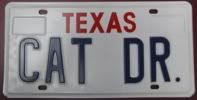 by planovet » Mon Jul 20, 2009 8:56 am
by planovet » Mon Jul 20, 2009 8:56 am
Texas Administrative Code, Title 37, Part 1, Chapter 21, Rule 21.7
(a) A person may not operate a passenger car or light truck while towing a trailer, semitrailer, house trailer, or another motor vehicle on a public highway unless safety chains of a type approved by the department are attached in a manner approved by the department from the trailer, semitrailer, house trailer, or drawn motor vehicle to the towing vehicle.
(b) Exceptions.
(1) does not apply to trailers, or semitrailers, used for agricultural purposes.
(2) does not apply to trailers, semitrailers, house trailers, or drawn motor vehicles operated in compliance with the Federal Motor Carrier Safety Regulations.
(3) does not apply to trailers, semitrailers, house trailers, or drawn motor vehicles which are equipped with safety chains installed by the original manufacture before the effective date of this section.
(4) does not apply to fifth wheel or gooseneck semitrailers.
(c) Definition of Terms.
(1) House Trailer--A trailer or semitrailer:
(A) which is designed, constructed, and equipped as a dwelling place, living abode, or sleeping place (either permanently or temporarily) and equipped for use as a conveyance on streets and highways; or
(B) whose chassis and exterior shell is designed and constructed for use as a house trailer, as defined in subparagraph (A) of this paragraph, but which is used instead permanently or temporarily for the services, or for any other commercial purpose except the transportation of property for hire or the transportation of property for distribution by a private carrier.
(2) Light truck--Any truck with a manufacturer's rated carrying capacity not to exceed 2,000 pounds and is intended to include those trucks commonly known as pickup trucks, panel delivery trucks and carryall trucks.
(3) Motor Vehicle--A self-propelled or towed vehicle used to transport passengers or property upon a public highway.
(4) Passenger car--A motor vehicle, other than a motorcycle, golf cart, light truck, or bus, designed or used primarily for the transportation of persons.
(5) Safety chains--A series of metal links or rings connected to or fitted into one another, and are inclusive of the hooks, coupling devices, and other connections, necessary in the coupling together of a towing or towed vehicle.
(6) Semitrailer--Every vehicle with or without motive power, other than a pole trailer, designed for carrying persons or property and for being drawn by a motor vehicle and so constructed that some part of its weight and that of its load rests upon or is carried by another vehicle.
(7) Trailer--Every vehicle with or without motive power, other than a pole trailer, designed for carrying persons or property and for being drawn by a motor vehicle and so connected that no part of its weight rests upon the towing vehicle.
(8 Truck--Every motor vehicle designed, used, or maintained primarily for transportation of property.
(d) Specifications for safety chains.
(1) Two separate and individual safety chains shall be used simultaneously in all situations where safety chains are required.
(2) The two safety chains will be of equal length, long enough to permit free turning of the vehicles without placing stress on the chains, and attached to the towing vehicle equidistant right and left of the point at which the vehicles are connected. They must be of appropriate length to allow for them to be crossed under the tongue, or connecting apparatus, of the towed vehicle in such a manner that they would prevent it from coming into contact with the road surface should the vehicles become detached. In no event will the safety chains be allowed to contact the road surface during movement of the vehicles.
(3) Safety chains shall be of sufficient strength to prevent the vehicles from separating in the event the towed vehicle disengages from the towing vehicle under ordinary towing conditions.
(4) Safety chains must be attached to either side of the tongue or connecting apparatus of the towed vehicle, equidistant forward and aft of the hitch or connector. They shall not be directly welded to the towed vehicle, but rather shall be connected by means of bolts, pins, or other secure connecting methods, that meet necessary strength requirements.
(e) Enforcement Policy. When the use of safety chains are required in accordance with subsection (a) of this section, enforcement actions should be initiated against all persons apprehended who are operating a towing and towed vehicle in combination:
(1) without both safety chains securely attached;
(2) when safety chains are improperly attached to the degree that one or both are in contact with surface of the road;
(3) when the failure of either or both safety chains or the manner in which they are attached allow the vehicles to become disconnected or allow the tongue or connecting apparatus of the towed vehicle to come into contact with the road surface during ordinary towing operations; or
(4) when the failure of either or both safety chains or the manner in which they are attached results in an accident.




 Mark (& Cindi)
Mark (& Cindi) 




